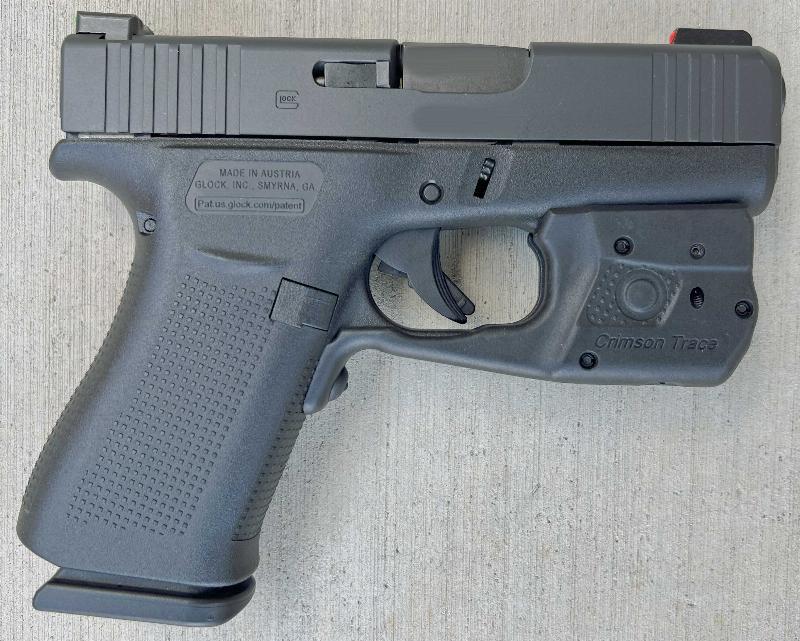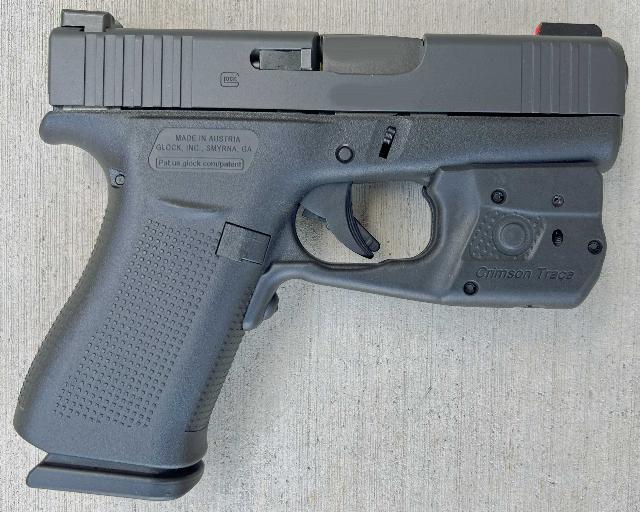


As compact semiautomatic handguns have become increasingly popular two issues have arisen: carrying a semiauto with the chamber empty and thinking a manual safety lever essential. Modern designs have made an empty chamber unnecessary, and carrying a handgun that isn’t ready to instantly use is not only dangerous, it’s potentially deadly.
A 2024 incident in Israel illustrates the dangers of what has come to be called “Israeli carry.” Several customers were standing in line in a coffee shop, their backs to the door—their first mistake—when a man in black, armed with a knife, attacked an Israeli in an IDF uniform. They struggled and fell to the floor. Another man joined the soldier in restraining the attacker on the floor and the soldier stood up, took several steps back, drew his handgun and for at least eight seconds, struggled to cycle the slide and at one point, even tried to hand his gun to someone else to help him chamber a round!
The guy helping restrain the attacker disengaged and moved off, and the soldier, finally able to chamber a round, fired, striking the attacker and incapacitating him—he fell to the floor--at the very last second. Even when shot, the attacker was within striking range with the knife. The soldier, and everyone else in that shop, was very lucky. Take this link to see the encounter.
Why carry a handgun that isn’t ready to fire when needed? People who do that haven’t taken the necessary steps to learn their weapon. They haven’t obtained the training and done the regular practice necessary to be comfortable with it. Modern handguns are designed to be safely carried with a round in the chamber, and as long as one wears an holster that covers the trigger/trigger guard and always keeps their finger in register—out of the trigger guard and extended, in contact with the slide—until the instant before firing, the gun is not going to fire.

Graphic: Glock 43X, Author.
But shouldn’t semiautos have manual safeties? Only if the design—as in the 1911 or Browning Hi-Power—makes it necessary. Glocks have no manual safety but three integral, internal safeties. Glocks will not fire unless the shooter makes a conscious pull of the trigger, or somehow catches the trigger on something. Proper trigger discipline and holstering technique will eliminate that kind of mistake.
Glock owns some 75% of the police market. Police agencies tend to be paranoid about safety, and many don’t provide sufficient training. If Glocks really were dangerous without an external, manual safety, they wouldn’t be so widely issued. Keep in mind Glock was essentially first with the modern, polymer-framed, striker-fired pistol. Every other manufacturer has followed their lead.
Smith and Wesson makes versions of most of their semiautos with or without manual safeties. What that tells us is their lawyers, in these litigious times, don’t consider manual safeties necessary to fend off lawsuits. Those that feel better with a manual safety can buy one, but Smith’s designers don’t consider them necessary either.
The 1911, John Browning’s enduring .45 caliber pistol design, is a single action with a manual safety. Single action pistols have short, light trigger pulls. Browning included a grip safety with the 1911, but his next major handgun design, the Hi-Power, omitted that feature.
The safety on the 1911 is well designed and placed. It’s large enough to be easily manipulated with the shooter’s thumb after it’s worn in. Until then, the lever can be stiff. In order to use the 1911 safely, the shooter must train to swipe the safety downward as they bring the handgun on target. After shooting and while returning to ready, the shooter must flip it back up, on safe, to avoid negligent discharges. This is necessary because in the stress of a deadly force encounter, it’s all too easy to inadvertently fire a round that one would not fire on the range where no one is firing back.
In teaching people that have carried 1911s for years, I’ve found few competent in this necessary skill demanded by the design of the 1911. The KISS principle—keep it simple, stupid—always applies. Anyone carrying a 1911 or any single action semiauto “cocked and locked”—chambered with the hammer cocked and safety on—must train until proper safety manipulation is essentially automatic. Most don’t.
Contrast that with the ease of firing a Glock or other modern striker-fired handgun. One draws, using proper trigger discipline, and simply pulls the trigger.
Everyone must train and practice to the point that their handgun is entirely familiar and comfortable, but without taking anything for granted. If one has that knowledge and confidence, if one follows common safety principles, chambered pistols with or without safeties, may be safely carried.
On a different subject, if you are not already a subscriber, you may not know that we’ve implemented something new: A weekly newsletter with unique content from our editors for subscribers only. These essays alone are worth the cost of the subscription.
Mike McDaniel is a USAF veteran, classically trained musician, Japanese and European fencer, life-long athlete, firearm instructor, retired police officer and high school and college English teacher. He is a published author and blogger. His home blog is Stately McDaniel Manor.
